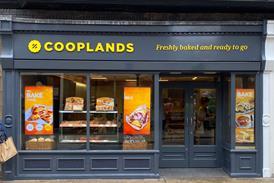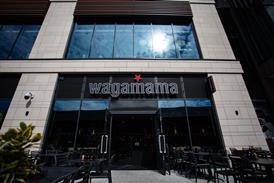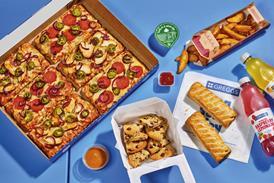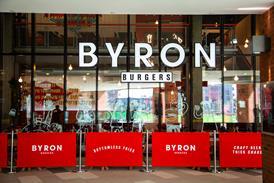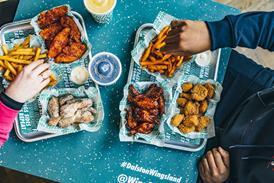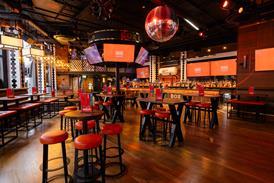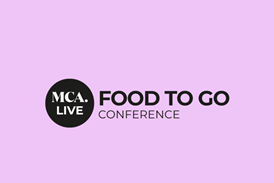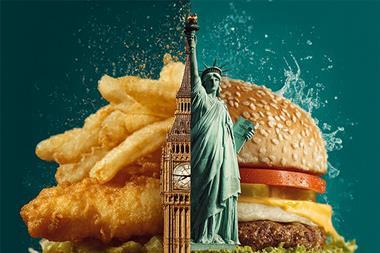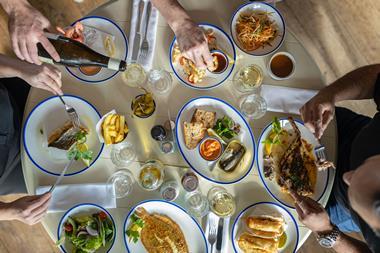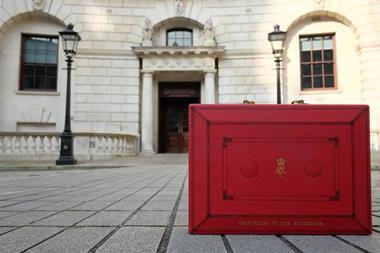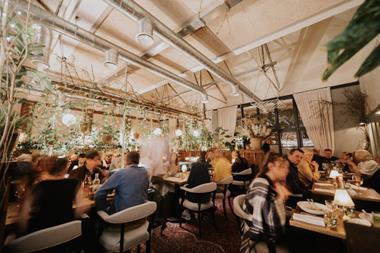The UK eating-out sector has long looked across The Pond for inspiration on future trends. MCA’s stateside expert Kerstin Kühn gives a rundown of what developments to expect in the US market in 2018
US restaurants will need to catch on to the growing trend of plant-based dining, which is taking grocery stores by storm, while at the same time becoming smarter with how they reduce and reuse waste. The face of food delivery will continue to change, but with tech giants getting involved, consumer choice is set to dwindle. In line with technological advances, cashless restaurants are growing but are they discriminating against certain groups? Here are the top US food trends for 2018.
Plant-based foods
While major dining trends are usually unleashed by restaurants, when it comes to the biggest food trend predicted for 2018, restaurant operators are falling behind the curve. We’re talking about the rapid consumer shift to ‘plant-based’ foods, including faux-meats, vegan cheese and the rise of lab-grown meats, which are expected to hit the market next year. Between 2012 and 2016 there has been a 257% rise in vegan claims in new products in grocery stores, with nearly a third (31%) of Americans now practising meat-free days, and two thirds (66%) believing that alternative proteins are healthier than red meat.
“Plant-based is the new organic, just not much in restaurants,” says Michael Whiteman, president of Baum + Whiteman, the New York City-based food and restaurant consultancy. “McDonald’s, to cite one example, has recaptured its mojo by ignoring plant-based demand, which is expected to grow 10% annually.”
However, there is a fork in the road for the restaurant industry as more operators are expected to start to incorporate new plant-based options on their menus over the next two years, including vegan cheese and plant-based meats such as Beyond Meat and Impossible Burger; while more plant-based restaurant chain startups will seek investors and even steakhouses will multiply the number of enticing vegetable options in order to eliminate ‘no’ votes from vegetarians.
“Tastes have changed and even the happiest of carnivores enjoy a vegetarian dish,” adds Andrew Freeman & Co (AF&Co) in its 2018 Trends Report. “Vegetables will be all up in your grill in 2018 as entrees like rotisserie cauliflower, jackfruit tacos, and hominy ceviche are becoming standard – even expected – in restaurants across the country.”
Take-over of the technocrats
“Say goodbye to your local food delivery website. By this time in 2018 lots of delivery services will either be gobbled up by big gorillas like Uber and Google and Amazon or they’ll have collapsed under competitive pressure,” predicts Whiteman.
It’s already happening: GrubHub is a stitched-together series of acquisitions, while online delivery service Bite Squad just bulked up by acquiring 17 small local outfits and integrating them into a system covering 30 metro areas in the US.
Google, Amazon and Apple are innovating (via Siri, Home and Alexa) ordering food just by asking for it, with Starbucks, Panera’s and Domino’s also becoming voice-activated players. Facebook experimented with adding a “buy” function to its restaurant web pages earlier this year and now it’s gone national by partnering with food delivery specialists like GrubHub, Doordash and EatStreet. Airbnb now allows users to make restaurant reservations through its app and website, while TripAdvisor has leaped beyond being a review site by including meal delivery services in an alliance with Grubhub. “These big-name players are invading their competitors’ turfs and simultaneously making alliances with them. When you look at names like Amazon, Google, Airbnb and OpenTable, then you know there’ll be a huge competitive shakeout and lots of mergers ahead and not just among the smaller players. In the long run, we’ll see less consumer choice,” adds Whiteman.
Going cashless
Credit and debit cards have been America’s preferred methods of payment for years and recently, mobile payment apps such as Venmo, and credit card perks have boosted cashless spending even more. The cashless trend is quickly spilling over into the restaurant industry, with some operators eschewing cash altogether. Earlier this
year, Visa declared war on cash by offering to pay up to 50 restaurants $10,000 each if they agree to stop taking cash. Now big players like Sweetgreen and Shake Shack are following suit.
There are benefits to going cashless: it is more time efficient during busy hours, saves running to the bank for change or worrying about theft. However, scrapping cash could be more controversial than
non-tipping restaurants, warns White-man, as it excludes certain groups of
people, particularly seniors or low-income people who use only cash and thus accen-tuates the spread between rich and poor. “Excluding the bottom of the market will make economic sense. Some US towns, however, are sure to try banning the concept and some groups will sue. But this experiment in frictionless restaurant shopping will expand in 2018.”
Fine casual dining
The elevation of fast-casual dining has long been a trend but now things are stepping up even more. A term coined by Danny Meyer to describe Shake Shack, fine-casual concepts are most commonly developed by fine-dining entrepreneurs, with the aim of expanding their business reach by branching down into the fast-casual market. Finecasual restaurants are meant to be a perfect blend of fine-dining’s high quality food and atmosphere with the cost structure of a fast-casual or quick-service restaurant. These concepts have been growing in popularity just as American eaters are expressing doubts about the quick-service model. AF&Co says: “Think upscale counter-service – and even table service – with curated ingredients and unexpected touches like a wine bar and optional tasting menu. Expect to see a rise in the number of restaurants popping up under this concept. We are entering the age of limited menus – where quality, speed, and customisation is more important than quantity.”
Creative waste reduction
“Reducing restaurant waste is no longer optional,” insists AF&Co. “Creative ways to combat and utilize trash are reflected in the kitchen and elsewhere.” AF&Co cites ice cream chain Salt & Straw, which has outposts in Oregon and California as a great example of an operator that embraces creative ways of reducing and reusing waste. Salt & Straw uses leftover popcorn from the Roxie Theater in San Francisco in one of its flavours, as an example of drawing attention while also cutting down on waste. The company also engages in partnerships with charities including Food Runners, a Bay area non-profit organisation working to deliver surplus food directly to people in need. “With celebrities like Anthony Bourdain digging into the issue in his documentary Wasted! The Story of Food Waste, everyone is talking trash these days,” AF&Co adds.


